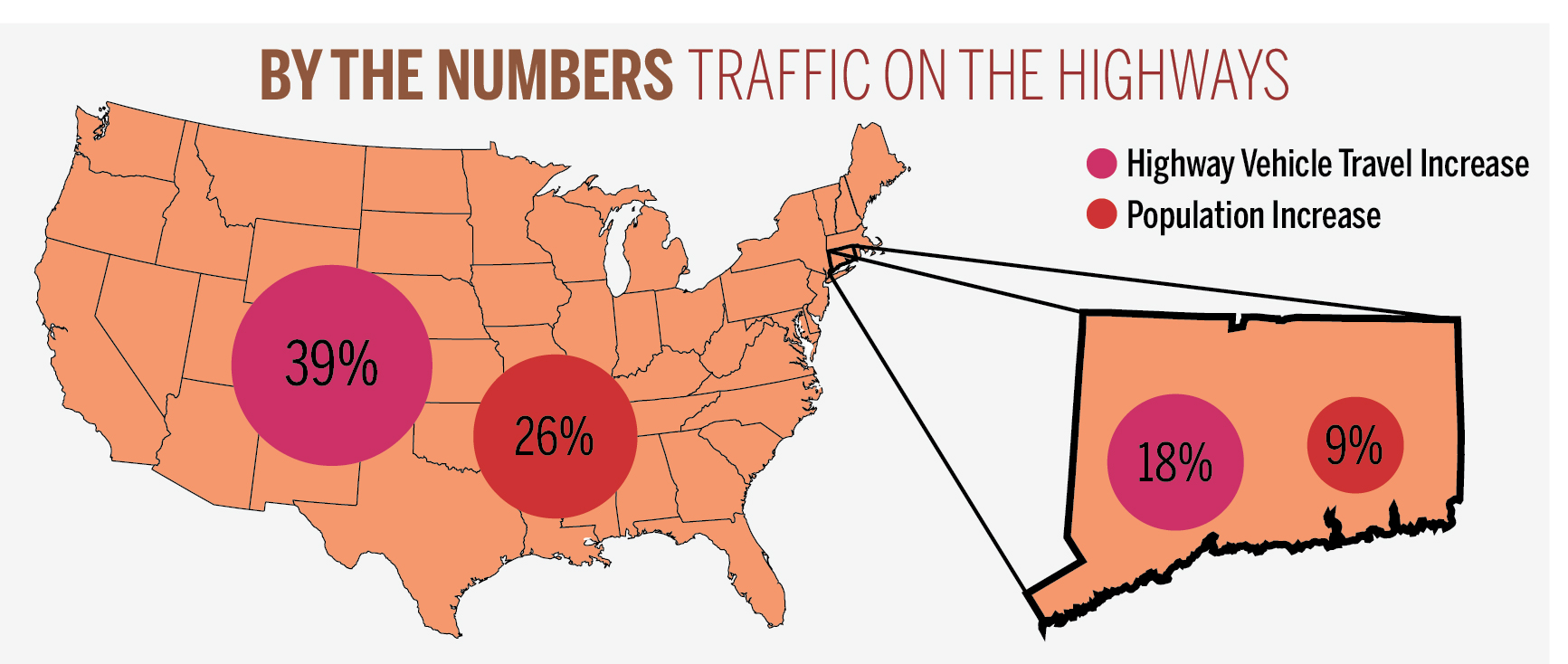
As Hartford grapples with the budget deficit, a coalition of business groups and state legislators are calling for the state constitution to be amended to establish a “transportation lockbox.”
The proposal for the lockbox — which would restrict the use of certain funds to transportation projects — first came before the General Assembly in Gov. Dannel Malloy’s biennial budget address in February.
Since then, the proposal has taken a backseat to the more immediate matter of addressing the state’s significant budget gap.
But as the state begins preparations for the General Assembly’s 2016 session, a group of legislators have come together to renew the push for the lockbox.
Malloy has made transportation funding a priority in his second term as governor, vocally advocating for rail links to connect New Haven, Hartford and Springfield, Massachusetts. His administration also launched the highly successful CTfastrak program on Mar. 28, a high-speed busway between Hartford and New Britain that is set to expand to East Hartford and Manchester.
A transportation lockbox would set aside funds for transportation and prohibit their use for unrelated projects. Malloy ultimately seeks to invest $100 billion in state and federal funds in Connecticut infrastructure over the next 30 years.
Much of the political support for the lockbox comes from legislators and business associations in Fairfield County, where the economy’s reliance on access to New York has made transportation investment a pertinent issue.
State Rep. Jonathan Steinberg, a Democrat from the wealthy commuter town of Westport, has been a vocal advocate for increased transportation investment. He described himself as a “broken record” on the issue of transportation investment at a news conference in Hartford last week.
Steinberg, a member of the state’s Finance, Revenue and Bonding Committee, said the creation of a lockbox would signal to companies that Connecticut is serious about improving its transportation infrastructure.
“What’s most important is that we create confidence that we have the funding necessary to meet the needs — the incredibly urgent and overdue needs for transportation infrastructure investment in the state of Connecticut,” Steinberg said at the news conference. “We believe the lockbox is the way to get started.”
Steinberg added that the state has already committed to a $5 billion short-term funding package to fulfill necessary repairs and avoid the “crumbling” of the interstate highway system in Connecticut.
State Sen. Steve Cassano, a Democrat from Manchester, said the lack of progress on transportation funding has disappointed him. He said the agenda of last week’s conference was the same as the briefings he held as a member of the original Transportation Strategy Board in 1990.
Cassano said infrastructure investment in Connecticut cannot proceed solely with state money. Instead, he said, the state will have to rely on some federal funding, with the availability of that funding determining the speed of progress on large-scale projects.
The General Assembly has made some progress on transportation funding. In its session earlier this year, the Assembly approved a measure that will devote 0.5 percent of state sales tax revenues to transportation projects. But for transportation advocates, more action needs to be taken.
Business interests have rallied behind the lockbox proposal, arguing the state has too often diverted transportation funding to other unrelated projects. Joseph McGee, vice president of the Business Council of Fairfield, said the lockbox would force Malloy and the General Assembly to keep their promises.
“It’s really critical that we know that if we’re going to do this, the money is there — that the government said we’re going to do it, and then we spend the money on what we said we’re going to do,” he said in a separate news conference on Nov. 5. “The worst thing that happens, when people really lose confidence in government, is when there’s a bait-and-switch.”
Joseph Brennan, president of the Connecticut Business & Industry Association, said transportation investment is necessary to “keep our economy competitive,” adding that congestion on the state’s highways is holding Connecticut back. Mary Tomolonius, executive director of the Connecticut Association for Community Transportation, said protecting revenues earmarked for transportation is the only way to address increased congestion and failing infrastructure in the state’s commuter areas.
Support for the lockbox is — at least in theory — a bipartisan effort. Cassano said a group of legislators from both sides of the aisle met with Malloy earlier in November in an attempt to work out a deal.
Senate Minority Leader Len Fasano, a Republican from North Haven, has also expressed his support for the lockbox, though he has criticized Democrats for their approach to establishing it. In a Nov. 5 statement, he called the press conference a “political move to get headlines,” carried out by Democrats who could not get the lockbox into the budget passed by the legislature in June.
Despite his criticism of Democrats, Fasano reaffirmed his backing for the proposal, adding that a constitutional amendment must be “clear” and “enforceable.”
“There can be no wiggle room if we are serious about protecting transportation for the long haul,” he said in the statement. “In addition to a strong constitutional lockbox, our state also needs a realistic, predictable, reliable plan to fund transportation.”
But some have called into question the enforceability of the lockbox. In a blog post late last month, legal scholar and attorney Dan Klau said state courts likely do not have the power to adjudicate misuses of the lockbox.
He wrote that the Connecticut Supreme Court is likely to treat disputes over the lockbox as political questions beyond its jurisdiction, resulting in a “legally meaningless” constitutional amendment.
For now, passage of the transportation lockbox looks likely. Cassano said he expects the lockbox to be included in the package Malloy presents to the state legislature in 2016.
Its passage as a constitutional amendment, though, may prove more difficult.
The lockbox must be approved by a 75 percent majority of each chamber of the General Assembly to appear on the ballot in 2016.







